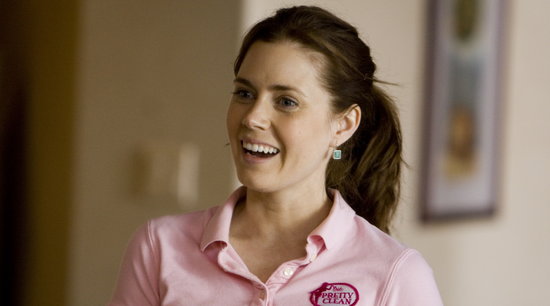
HEALTHY CHOICES
What do you find harder to imagine: Amy Adams saying “fuck”, or Amy Adams reaching for a half-naked man’s buckle…? Fans of Enchanted (2007) will probably cringe at the mere question, but Sunshine Cleaning (2009) has both these things, and more. It’s a testimony of a great actress being born on our very eyes, and will probably convince anyone who (unlike this writer) thought that Adams’ presence in Doubt (2008) left any place for uncertainty about her talent and scale.
Of course, the central metaphor of the movie – that of cleaning up after dead people as being a way of dealing with one’s own messy life – is verging on crassness. But Sunshine Cleaning is much more intelligent that a lot of its own material, and it takes full advantage of having two great actresses at hand. What’s more, it doesn’t prettify New Mexico’s suburb into what most movie would make an Indieland, USA.
Hitchcock devoted good 10 minutes of his Psycho (1960) to cleaning up blood from the scene of the murder. Here, even though AIDS (rather strangely) doesn’t get mentioned, blood itself becomes much more of a theme. When Emily Blunt’s character gets praised for having “nice veins”, we may feel at a loss, but when it is later revealed that both sisters have been waiting for years to catch a singular episode of a soap opera their late mother had a speaking part in – it makes much more sense.
Life as one big wait for a line in a tawdry TV show – now, corny as this metaphor is, it hits close enough to home, and I was moved more by this uneven but intelligently made movie more than I was by Tyson (2009). Go figure.
If ever a single shot in a movie was immoral, The Soloist (2009) managed to include one. Anyone who thought Slumdog Milionaire (2009) a shameless commercialization of poverty, will be blown away by Joe Wright’s bluntness in exceeding what Boyle did in his movie. One gliding steadicam shot over a homeless’ recluse in the night – complicating the lightning and mise-en-scene to the point of abstraction, and relishing in every inch of the portrayed squalor, was enough for me. Wright treats poverty the way he treated British rural landscape in Pride and Prejudice (2005) and Atonement (2007) – as a surface to wax and polish, but never to puncture; never to explore.






No comments:
Post a Comment